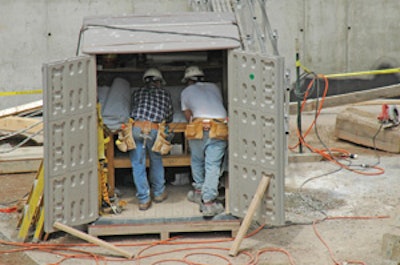
As I was returning from the annual Associated Equipment Distributors (AED) convention in San Diego, I was reviewing the construction forecast for 2006 and beyond. I have to say there are reasons for contractors to keep smiling.
Nonresidential construction component trends are all up, with commercial projected to increase about 4% and the others up over 10%. Heavy construction is also projected to increase over 10%, with highways being the weak link in this segment.
The only fly in the ointment seems to be residential, which is expected to remain flat or decrease by 1% to 2%. And with residential making up over 50% of overall construction spending, any residential slowdown drags down total construction spending. For example, final total construction spending for 2005 was up 8.4% over 2004. Yet, it is projected to be up only 6% in 2006 vs. 2005, even though many of the other components are projected to have double-digit increases.
Mortgage rates are expected to inch up a bit with federal fund rates increasing as required. Some minor increases are expected throughout 2006.
Taking all of this into account, contractors surveyed feel 2006 will be a good year. Many areas of the country that were thought to be only average in 2005 have moved up to a "good" for 2006.
A strategy to take on more work
As we move through the cycle — with potential work more plentiful and plenty of money in the banking system — you may come across opportunities to bid on jobs your company is not big enough to handle, or that present scheduling conflicts or geographic restrictions. If you're unwilling to give up this potential work, or just want to get a foot in the door for larger contracts, you might consider using a joint venture arrangement.
Joint ventures certainly have their place in construction work. Done properly and for the right purposes, they can be quite rewarding, while spreading the risk of the job among joint venture partners. They allow you to combine resources with other contractors to bid on larger, more complex jobs, or enter into new geographic areas. They can be used to combine resources on a single project, or be created with the purpose of making a geographic move permanent.
However, done improperly without the proper controls and follow-up in place, joint ventures can quickly become a disaster. Even subject to a logical strategic plan, they can cause so many problems that they deflect you from your main goal of running your business. This is why proper planning and documentation are critical.
Joint ventures can take on one of many legal forms. But no matter which form they take, a written joint venture agreement, prepared by a competent industry attorney, is required. This agreement should contain terms to cover:
- Purpose
- Capital contributions
- Rights and responsibilities of all parties
- Bonding responsibility
- Profit and loss sharing
- Cash flow sharing
- Decision-making process
- Terminations
- Default provisions
Needless to say, joint ventures are not something to take on lightly without doing your due diligence. You must also have complete confidence in your ability to manage and monitor the contracts subject to these arrangements. There is little doubt that keeping up to date on these activities has to be a No. 1 priority to avoid problems. Finding out you have problems six months after the fact does not do it.
Decision-making process
Joint ventures provide many advantages. They get you into projects you could not afford to do otherwise, plus they spread the risk and investment to a manageable level for all participants. On the other hand, participants had better get used to working by committee, since they no longer have the ability to control all the decision making regarding their work product. Spelling out all management decision-making processes in the joint venture agreement is worth every penny you pay for it.
Joint venture agreements have and do work as long as you properly set them up and monitor operations and results. If there is any doubt about your company's ability to do so, you may want to stay out of this segment of the business until you are more comfortable with the process.




















